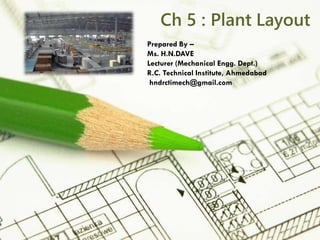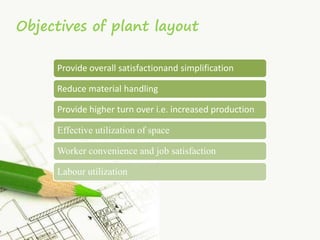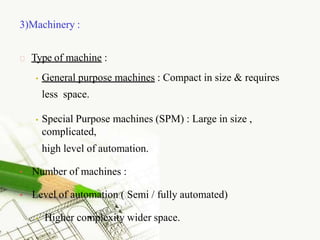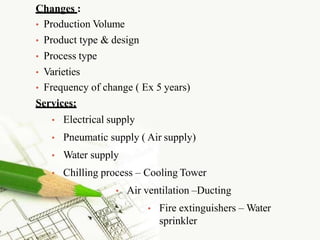The document discusses different types of plant layouts, including product layouts, process layouts, fixed-position layouts, and combination layouts. Product layouts arrange equipment along a production line to efficiently produce large volumes of similar items. Process layouts group machinery by function to allow for flexibility and variety in production. Fixed-position layouts keep products stationary while moving workers and equipment. Combination layouts blend aspects of product and process layouts. The key factors and principles influencing effective plant layout design are also covered.


































